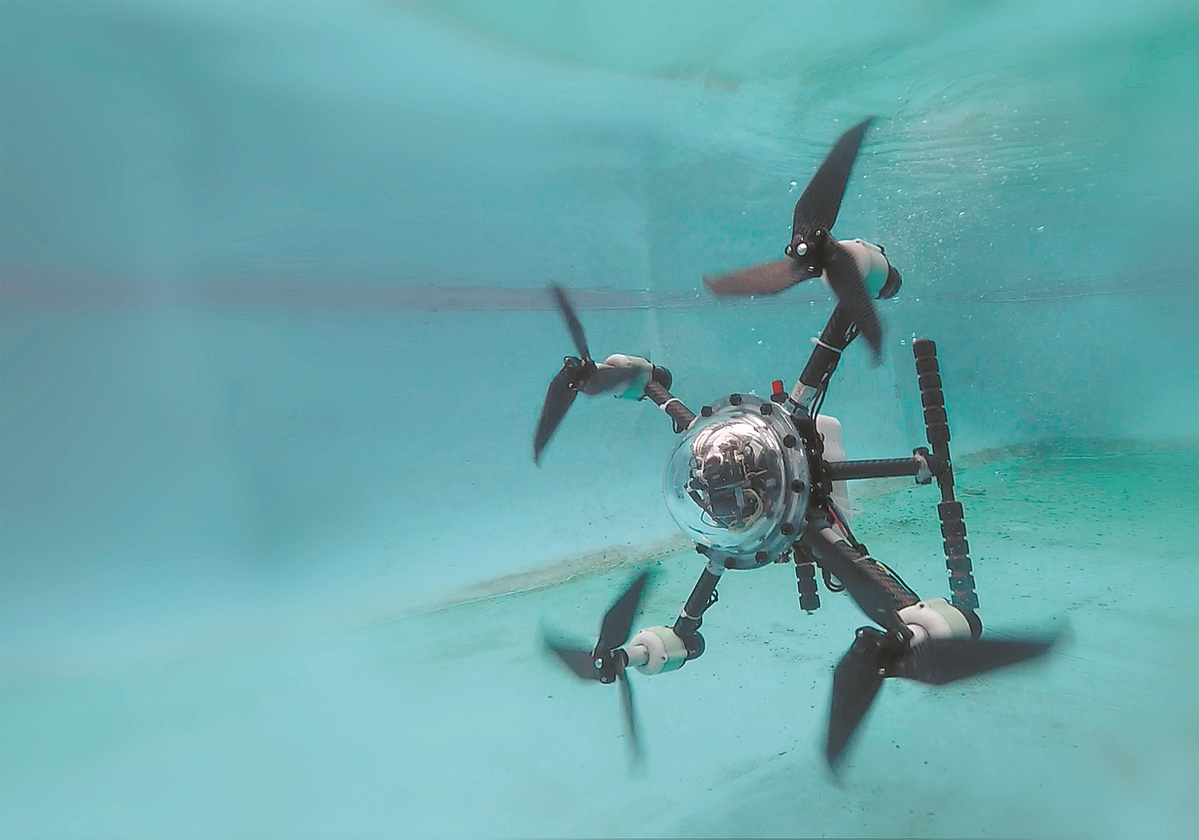New drone at home in air and water
By ZHOU WENTING in Shanghai | CHINA DAILY | Updated: 2023-02-18 07:32
The TJ-FlyingFish diving drone. [Photo/China Daily]
Chinese researchers have developed a diving drone that can switch between flying and swimming, which will play a better role in cross-domain detection, remote sensing, disaster rescue and other scenarios.
The device is able to both fly as a standard quadcopter and explore underwater environments like a submersible. Researchers said it can be used for aerial and aquatic surveys, resource exploration, and search and rescue tasks.
A team of scientists from Shanghai Research Institute for Intelligent Autonomous Systems affiliated with Tongji University and another from the Unmanned Systems Research Group at the Chinese University of Hong Kong jointly developed the device, TJ-FlyingFish, which is currently in a functional prototype stage.
The device, which weighs 1.63 kilograms and is 38 centimeters wide, can hover for six minutes in the air or operate underwater for 40 minutes per battery-charge. It can work underwater at a speed of two meters per second and descend to a depth of up to three meters.
Researchers said autonomous systems being able to function across different domains with improved mobility and flexibility are the trend for research and development.
They said the device, the first of its kind in news reports worldwide, realizes the exchange and integration of data obtained in the air and from underwater, and will allow work in a range of possible applications to proceed with better efficiency and results.
The devices could be either used alone in operations or together with other equipment and act as messengers in a cross-domain collaborative system, realizing information transfer and interaction between cross-domain nodes, according to the researchers from the institute at Tongji University.
A number of technical challenges have been overcome to make the device a reality. Scientists said that when flying in the air and operating underwater, the device must adopt different postures and engage different systems to adapt to the properties of the environment.
TJ-FlyingFish looks similar to any other quadcopter. It consists of a central domed body and four arms, each with a propulsion unit at the end. Each propulsion unit incorporates a special dual-speed gearbox.
When the aircraft is in flight, all four of the units are facing upward and spinning their props. Once it lands on the water, the units rotate to face downward and spin at a lower speed, propelling the drone beneath the water's surface.
In order to move both vertically and horizontally after it is fully submerged, the drone adjusts the angle and thrust of each propulsion unit as required.
The device is also equipped with a trans-domain positioning and navigation system consisting of the Global Positioning System, an inertial measurement unit, a depth meter and a micro ultrasonic velometer, allowing it to be capable of completely automatic control and zero human intervention at any point of its amphibious operation.
Researchers said much interest has been shown by diverse industries in terms of possible applications of the device, which will be designed in different sizes and will be able to adapt to deep or shallow sea environments after further technical breakthroughs.

